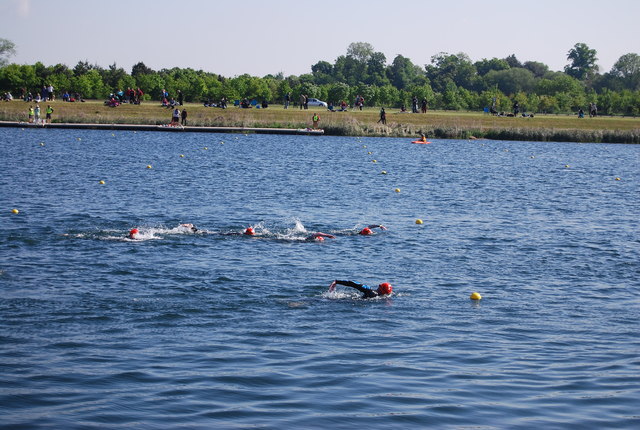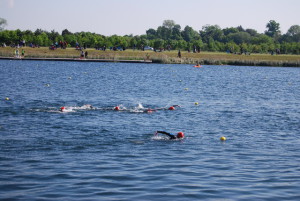Open water swimming has become one of the most popular form of swimming over recent years. Swimming has declined in popularity in other countries, but the number of people participating in open water swimming has increased. As one of my favorite pastimes, open water swimming is both a rewarding and fun activity. It differs then regular swimming in the idea that instead of being in a controlled environment, you are in an open body of water and must be able to think quickly. There are numerous different variables that take place and someone has to be prepared for anything to happen.
A pool offers the ease of tranquility and control. Lane ropes will help to stop the waves and wakes produced by swimmers in nearby lanes, lines on the bottom help to guide the swimmer straight, walls to help the swimmer rest against and the water is a controlled temperature. The pool offers no surprises which is fantastic to help with swimmers learn or perfect techniques, and to get a fantastic workout that is easy on the joints at the same time.
Open water swimming offers another level of challenge to swimmers looking to push themselves. There are different challenges that the open water presents such as wind, waves, sudden temperature charges and other unpredictable factors. There is nowhere to just stop and rest if you suddenly get tired either.
So what is the best way to prep for open water swimming? Professionals recommend that you pick a variety of places to practice in. You want to make sure that you are exploring every type of open water so you can get a feel of everything. Try swimming in a pond one day on a calm day, and then a bay the next day when it’s cloudy. Try swimming in the ocean when it’s windy or a lake when it’s raining. By exploring all these different bodies of water with all different types of weather conditions, you’ll never be taken guard when swimming.
There are certain techniques that are required in open water swimming that aren’t needed in other forms of swimming. Bilateral breathing is critical for a swimmer to learn for open swimming. What is bilateral breathing? It’s when a swimmer will alternate sides during a freestyle swim, or making sure to breath away from the direction the wind is blowing or a wave is forming. Besides ensuring that you are going get the proper breath, this specific breathing technique helps swimmers with a well balanced stroke.
Sighting is the other incredibly crucial move an open water swimmer needs to be safe. Since there are no lines to help guide a person straight, this will ensure you are going in the right direction. There is nothing worse than thinking you are going the right way and realize that you are a mile off course. This technique involves lifting your eyes out of the water and looking at what is ahead of you as opposed to side to side, which can occur when you in a pool. It’s recommended to practice this in a pool at first by lifting the neck out of the water and focusing on something ahead of you such as a water bottle placed at the end.
The final important technique open water swimmers use is called drafting. This move will be more important when swimming in a competition or race. Drafting involves moving into the slip stream that is formed by another swimmer in front of you. It helps to save energy since you don’t need to use sighting as much. Instead of lifting your head out of the water to guide yourself, the bubbles formed the other swimmer will help to lead the way. If you are interested in a race or competition, there are many different ones for open water swimming. The one I participate in is the US Masters Swimming, but Google your location and I’m sure other events will show up. It’s a great way to explore your environment, stay in shape and make new friends.
I hope these different techniques help to sharpen your open water swimming. Thanks for reading!

